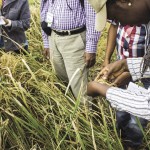It is time to think about desiccation and pre-harvest weed control. “We’ve had some really good, hot weather for harvesting, so it really hasn’t been a year that we’ve had to talk much about pre-harvest desiccation or pre-harvest weed management,” provincial weed extension specialist Kim Brown-Livingston says. “But the harvest has just begun, and we’ve










